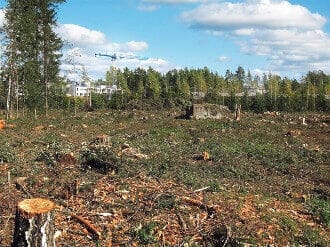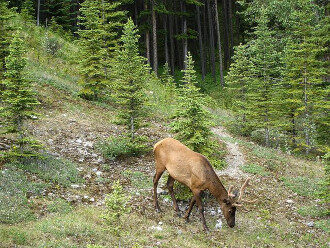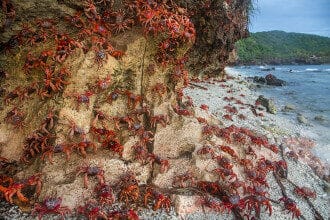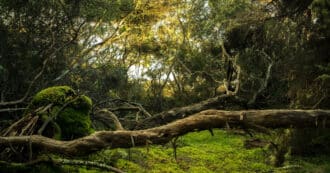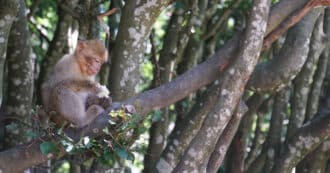By Harry Cooper – Humans have altered the natural environment to a considerable extent. Building massive cities, and roads has completely reshaped the landscape of the natural world to better suit humans. However, this new and changing world is certainly not beneficial to everything living in it.
As animals are finding themselves on an increasingly changing planet they are having to find ways to adjust to a new lifestyle. One of the most important parts of any animal’s survival, and one of the hardest things to adapt in a human run world, is movement. Migratory species move along seasonal pathways, and other animal species move to find more suitable habitats with better resources and more food.
Biodiversity at Risk
Human activities have made this movement incredibly hard, as animals now find roads, cities, and pollution where they were once able to travel freely. When wildlife species are unable to move they may find themselves stranded on tiny islands of habitat amongst a sea of human activity. As more and more animals lose suitable habitat this way, we can expect to see a decrease in biodiversity.
However, there is a simple solution to this. Humans have started building habitat corridors, which allow animals to migrate and travel between suitable environments. These habitat corridors come in many different forms, but the idea of planning human development around the world of animals is helping to save biodiversity all over the world.
Habitat Fragmentation
Habitat destruction is the main cause of decreasing biodiversity in today’s world. As species’ natural habitats are destroyed they lose their suitable living environment, and when animals are unable to find a suitable living environment, they are put at risk of going extinct.
However, before a habitat is completely destroyed it often gets broken up into smaller pieces leaving smaller “habitat islands” among the human altered environment. Breaking up habitats in this way makes it harder for animals to move between them, and can often leave them stranded.
Affects of Habitat Fragmentation
Habitat fragmentation is a widespread and detrimental issue for wild animals everywhere. It is estimated that around 70% of the world’s forests are within one kilometer from a human altered environment, such as agricultural and urban areas. This makes them much more susceptible to pollution, degradation, and other human disturbances.
Life in a Fragmented Habitat
With the surrounding habitat of so many different places being replaced with cities and farms, many species are finding their natural habitats becoming increasingly vulnerable. This can make life incredibly hard for animals stuck in a fragmented habitat.
Smaller population sizes means less diversity among species. This means that inbreeding is more common among fragmented habitats. Inbreeding results in genetic deformations and illnesses.
As there are less animals in each habitat, natural disasters such as extreme weather or disease have a bigger chance of killing off all the species in a smaller area. This makes it easier for animals to go locally extinct in an area, instead of having their population bounce back.
Fragmented habitats also have less food. This makes it harder for places to support bigger varieties of animals such as large mammals and predators. Without these top predators, entire ecosystems can be thrown out of balance.
Thus habitat fragmentation is turning once perfect habitats into places incapable of supporting healthy ecosystems. As habitats become more and more fragmented we are putting more and more species at risk of extinction.
Wildlife Corridors
Humans have started taking notice of the decrease in habitat connectivity. Wildlife conservation efforts have started to focus on ways to increase landscape connectivity in order to help preserve biodiversity and prevent animal species from going extinct.
One of the best ways of doing this is through implementing habitat corridors. A habitat corridor works to create wildlife crossings between fragmented habitats in order to allow animals to travel between habitat patches.
By building passageways to other suitable habitats animals are able to go about their business with minimal interaction with humans. This not only helps animals avoid the negative impacts of human influence, but it also decreases the chances of a human running into a large animal on the road, or from encountering a potentially dangerous animal whose habitat has been lost.
What is a Habitat Corridor?
Habitat corridors can come in many different shapes and sizes. There is no one definition of how a habitat corridor should look so it can be anything from a complex strategically placed nature conservation area to something as simple as a tunnel under a road.
Regardless of how a habitat corridor is planned, as long as it is designed to create a more connected ecosystem and allow animals to move freely without being disturbed by humans, it is doing its job to increase wildlife connectivity.
Examples of Habitat Corridors
Habitat corridors can be found all over the world. Habitat corridors in different places can be used in different ways and designed for different things, such as using different materials, being designed for different species, and having different structures.
Protected Land
One of the best ways to ensure that animals are capable of moving between suitable habitats is to protect the land in between them. Government agencies such as the wildlife service have the ability to allocate protected areas. These protected areas can act as pathways between suitable habitats, and can help preserve all kinds of animals from panthers to butterflies.
Burnham Park
Instances of land being protected to act as a habitat corridor can be seen all over the US. One example of this is the Burnham Wildlife Corridor in Chicago. The Burnham Wildlife Corridor is a hundred acre strip of natural land stretching through Chicago’s Burnham Park. The corridor contains prairie, savannah, and woodland ecosystems that provide protection for migratory and local species alike from the highly urbanized landscape of Chicago.
Wildlife Underpasses and Bridges
One of the biggest contributors to habitat fragmentation is roads. When animals try to cross highways and other major roads, they put themselves, and the drivers that could hit them, at risk. In order to prevent animals from having to cross dangerous roads many places have started to implement underpasses and bridges for wildlife to use in order to avoid having to cross a potentially dangerous road.
This type of wildlife underpass and bridge helps animals in their search of food and suitable habitat by keeping them safe from cars. These structures have been installed across major roads everywhere, and can be found giving animals safe passage throughout the world.
Christmas Island
Christmas Island is a small island in the Indian Ocean owned by Australia. The island is famous for its massive annual red crab migration, where thousands of red crabs swarm across the island looking for a place to breed. The migration is a big tourist attraction, as well as an important part in the red crab lifecycle, but recently human built roads has made it increasingly harder for these crabs to make their journey to the sea. Fortunately, the island has several wildlife bridges designed for crabs cross many of the major roads. This allows crabs to reach their breeding grounds without facing human interference.
Banff National Park
One of the most prominent examples of habitat corridors is Banff National Park. This park in Alberta, Canada. is home to many different species, as well as a 40 kilometer stretch of the Trans Canada Highway. In order to stop animals from having to cross one of the countries busiest roads, Banff National Park now has thirty eight wildlife underpasses and six wildlife bridges. These bridges and overpasses help protect animals and people driving on the Trans Canada Highway, in order to make the park a more suitable place for both animals and humans.
Religion and Habitat Corridors
James Krupa shared with Mongabay about the efforts to protect a wildlife corridor in Belize. The Maya Forest Corridor (MFC) is intended to connect the Belize Maya Forest to the Maya Mountain Massif. Various animals live in these areas and would benefit from the MFC such as “tapirs, opossums, armadillos, pacas, agoutis, and the five great cats of the Belize jungles.” But the species that excites Krupa and the Belize locals more than any other is the jaguar.
Krupa describes in detail the local love for the jaguar:
Everywhere we went in Belize contemporary art, paintings on walls, statues, and figurines of this creature were visible. This species has a deep history in Maya culture and religion. Many Mayan gods don attributes of this creature, especially those of the underworld. The Maya believed the Sun God of the day transformed into the underworld god of the night – the jaguar.
Another article goes more into details about jaguars in Mayan culture. The article discusses how “Balam, the word for jaguar, also means ‘priest’ and ‘sorcerer,’ and shamans frequently chose them as the object of their transformations.” This is fascinating because in the Hebrew Bible there is also a character named Balam, who is a sorcerer. It’s unclear what to make of this connection, but it certainly added mystique to the already enigmatic jaguar.
Back to the MFC, how is it being established? The answer is through buying land to turn into wildlife sanctuaries and through building wildlife underpasses beneath the Coastal Road. It’s exciting to see the progress being made that will help protect jaguars and other species. Whether we wish to protect jaguars because we view them as ecologically important or we wish to protect them because of the Mayan belief that they are the “underworld god of the night,” we have good reason to work together to protect these magnificent creatures and other animals who depend on wildlife corridors.
* Featured image source


